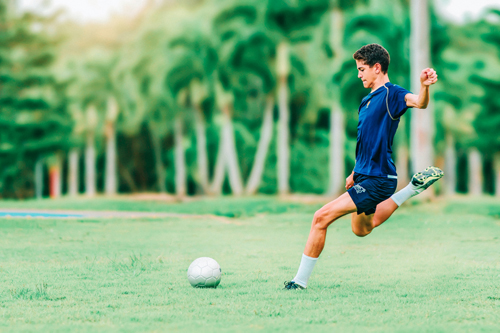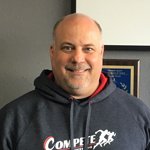
Q: [Adolescents and teens] How should I prepare my athlete for returning to sports?
After spending time away from organized activities, there will be an understood eagerness to quickly return to previous levels of practice and competition. That being said, it is best to protect young athletes and performers by realizing that starting with too many or too intense practices can be a recipe for bone and soft tissue overload injuries that will quickly put athletes right back out of play for long periods of time.
Overload and overuse injuries come from either too much acute stress on normal bones, joints and muscles, or normal stresses on weaker bones, joints and muscles. Athletes who have been inactive for a longer period of time and immediately amp up activity may suffer from both conditions.
In general, this process may take several weeks. Remember, we get in shape to play sports, not play sports to get in shape.
Recovery and Rebuilding Plan
- Start with a review of individual skills and techniques. Not only are athletes deconditioned, but some of them might actually have grown over the past several months. Growth periods and time away from activity are big contributors to young athletes losing technique skills. Go back to basics. Start with simple drills that would have been performed years ago.
- Review jumping, landing and cutting movements. The issue with this is parents, coaches and players oftentimes are unfamiliar with the most effective techniques. In this case, it may be best to utilize a professional who understands and can teach these mechanics. Use these two exercises to help prevent ACL injuries.
- Keep initial practices shorter. Young athletes will fatigue quicker and fatigued athletes get injured.
- Limit repeats of repetitive movements like volleyball hitting reps, throwing, swinging or leaping/jumping.
- Plan for at least one day off between practices. The athletes’ body needs more time to recover in these important first few weeks.
- Look at the mental game. Some young athletes may not want to quickly come back or at all. Give kids a voice to play an active role in deciding when and how fast they return.
- As players return to their sport, parents and athletes may want to consider engaging a professional to help get back into game shape, improve strength and reduce the risk of injury.
When Pain Should Cause Concern…
- If there is finger-tip pain. If you can use the tip of your finger to point out a location of pain, there is a higher chance for a significant bone injury, ligament sprain or muscle tear/strain.
- If there is any lack of joint motion, especially in school-aged athletes.
- If there is a sudden onset of pain and limited motion after throwing, landing or changing direction. Hearing or feeling a pop sensation is even more worrisome.
- If there is any limping or change in walking or running technique.
- If the athlete is constantly thinking about an uncomfortable body part (e.g. having to limit cutting or turning since my foot hurts).
- If there is obvious bruising or joint swelling.
- When there is a need for medication (ibuprofen, for example) either right before or after practice.
- When there is soreness or pain during or after exercise. In this case, ask athletes to rate soreness and pain on a zero to 10 scale. Zero to three during and right after practice is one thing, any score four or higher is more of a concern.
- When there is any pain or soreness while at rest.
- When the same pain does not go away after two to three days. If the athlete has pain, even muscle soreness, they should avoid going back to practice as it may lead to injury.
Photo by Kobby Mendez on Unsplash

Dr. Chris Koutures is a dual board-certified pediatric and sports medicine specialist who practices at ActiveKidMD in Anaheim Hill. Follow him on Twitter @dockoutures.

Chris Phillips is an athletic trainer, strength and conditioning specialist and sports safety specialist, and owner of Compete Sports Performance and Rehab in Lake Forest. Follow him on Twitter @chriscompete.









Leave a Reply